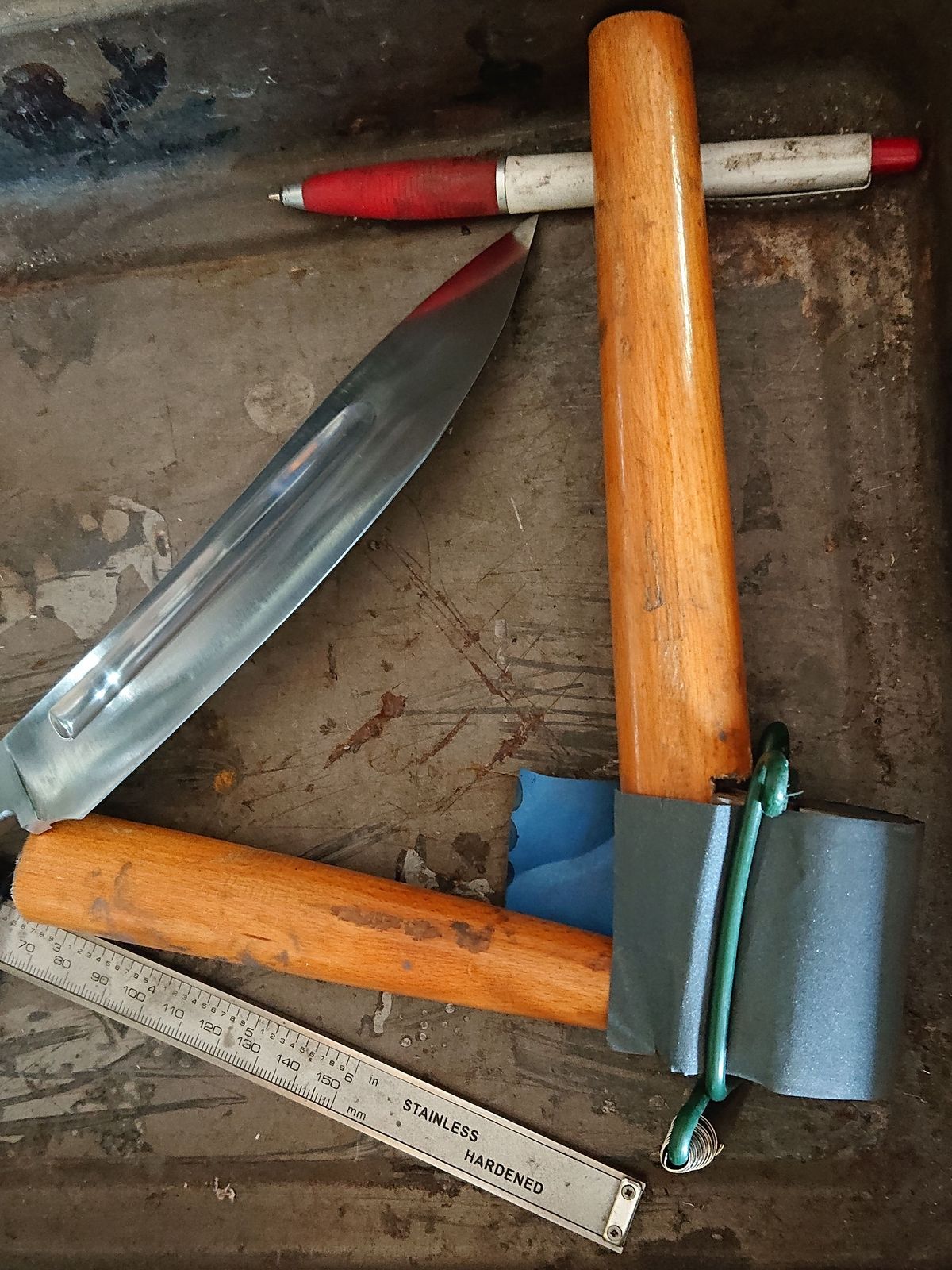I did not expect this to happen, which is probably why it did happen. I was cutting wood for handles and stand and one piece started giving me some grief. Either the saw is a bit dull or that particular piece of birch was exceptionally hard (birch is amongst the hardest woods, contrary to what many books say). It smoked a bit, but not much. So I paused the work, tried a different cut when suddenly there was a lot of smoke. Like, a lot lot. In seconds, the workshop was full of it.
Luckily I tend not to lose my head in emergency situations. I noticed the smoke going from the vacuum collecting dust. I have immediately unplugged it and the saw from electricity and I dragged the vac outside. The paper dust filter inside was on fire and it was impossible to put out because it was windy. I have barely managed to take it off and leave it to burn safely on the concrete pavement. The wooden dust was smoldering a bit but I have managed to scoop it out and toss it in the oven where it could burn safely.
I do not know how this could happen, I have been using this setup for about a decade by now with zero problems. Either the saw was so dull that the friction started the fire – birch is much more flammable than other woods – or a metal splinter or something somehow got in the cut and it struck a spark. Visually, the blade does not seem dull and I cannot find any damage on any of the teeth, so I am baffled.
Tomorrow I have to go and purchase a new vacuum for my shop. This one could be repaired, but it would take a really long time. I will probably not bother. But it can be easily converted now into a dedicated blower, so I shall probably do that.
I had to take a few hours rest, I was in a bit of a shock afterward.




















